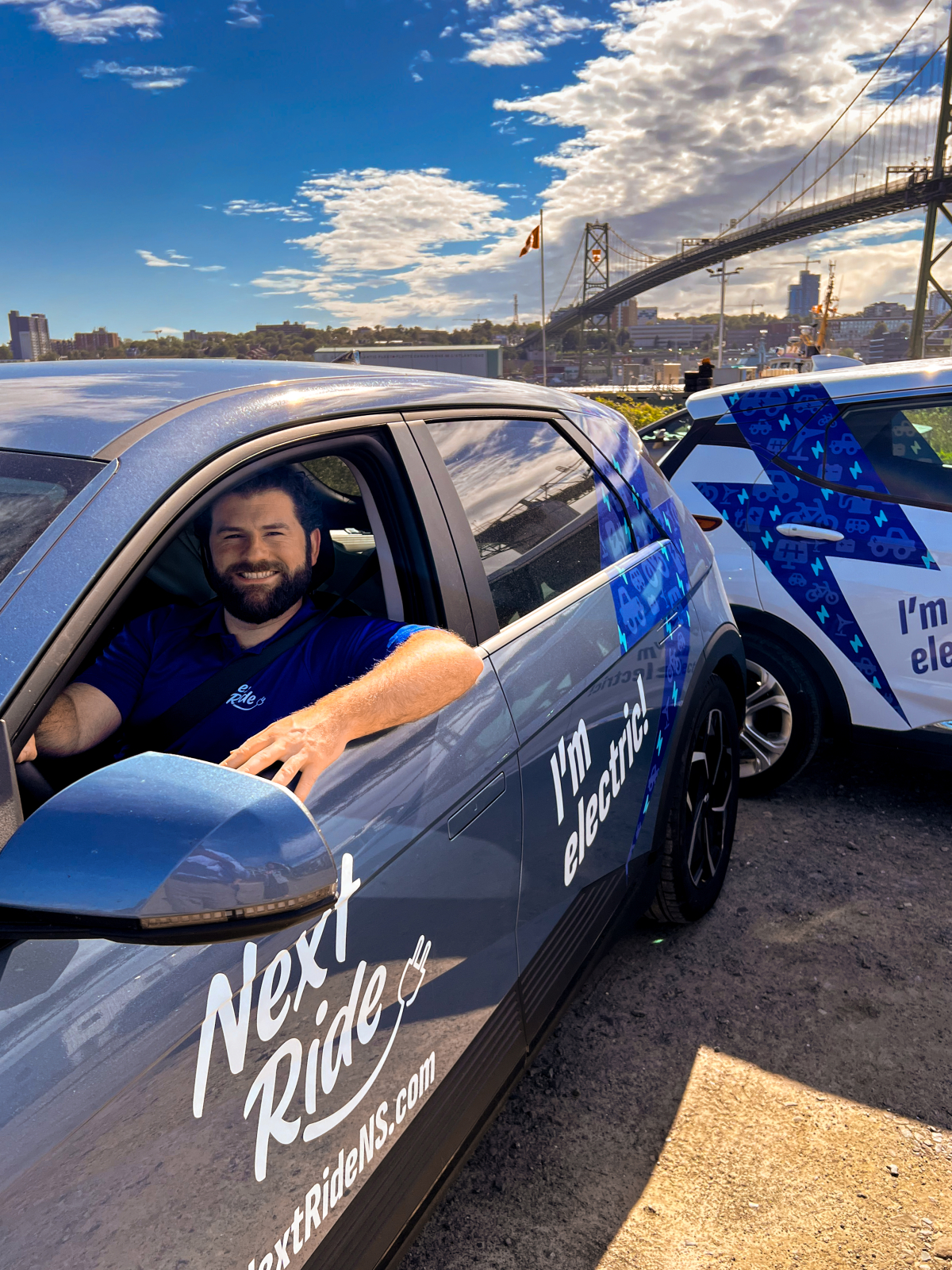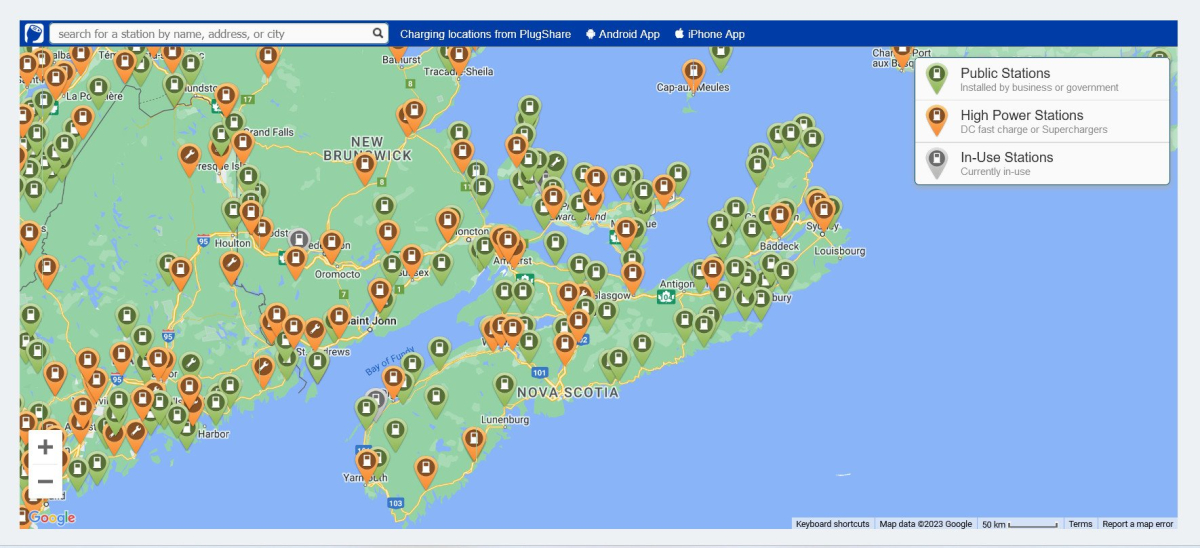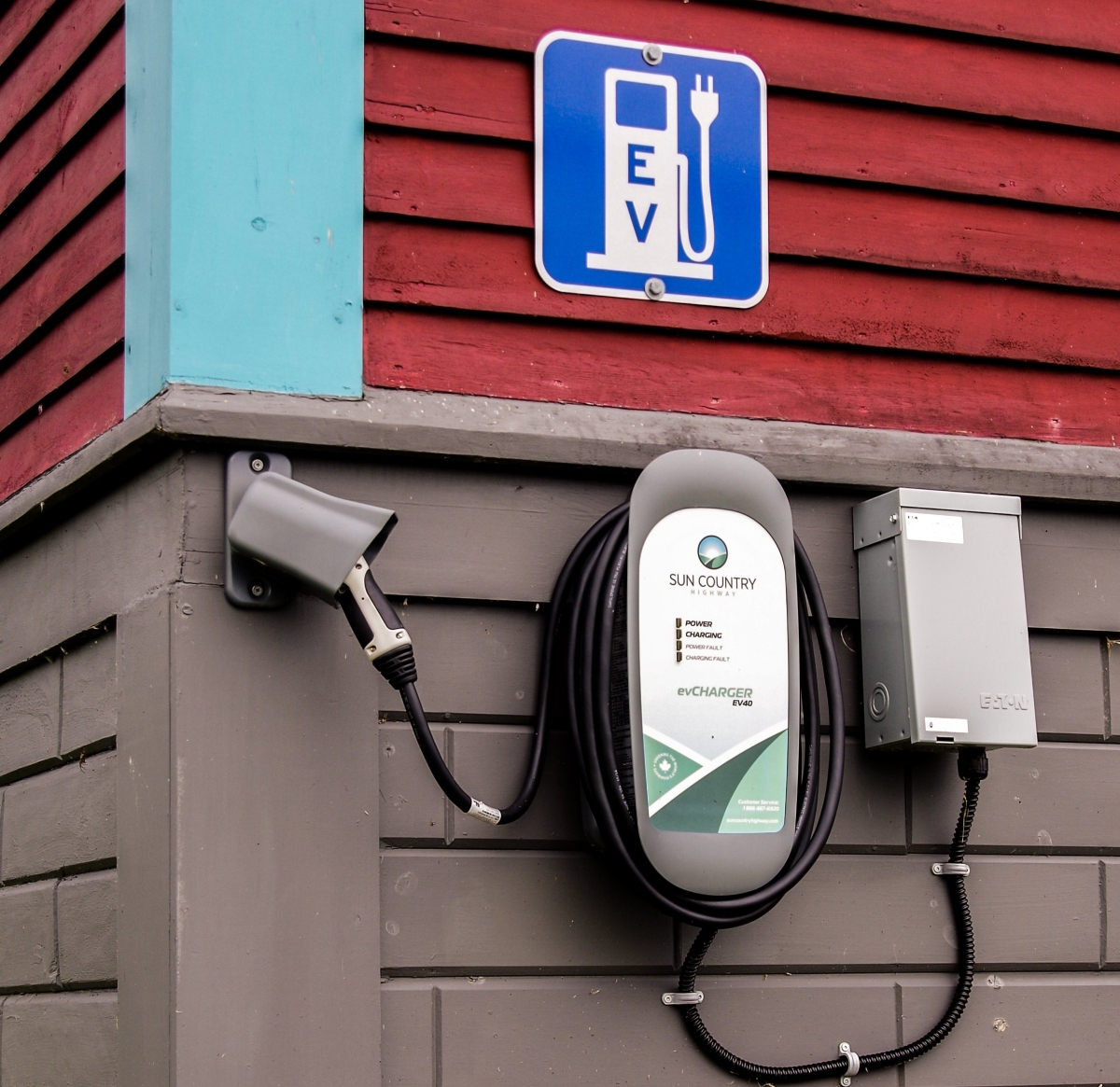Support strong Canadian climate journalism for 2025
There are many ways to get from A to B, but two other letters — E and V — are gaining the most traction in talk around climate change and transportation. This is understandable, given that transport is the second-highest source of greenhouse gas (GHG) emissions in Nova Scotia. GHGs trap heat in our atmosphere, creating extreme weather and worsening other effects of climate change.
But as electric vehicles become an exciting new option for some car owners, many are wondering if EVs are as environmentally friendly as advertised — especially in Nova Scotia, where a majority of our power is still generated by burning coal.
“Are electric vehicles truly green?” It’s a question that Brendan Piper of Next Ride, an electric vehicle education program offered by Clean Foundation, CAA, and the Province of Nova Scotia, gets asked all the time. The answer is an important one as electric vehicle sales soar across Canada.
The E could also stand for efficient
One of the advantages of EVs is their efficiency in turning energy used into kilometres travelled.
“Electric vehicles are between 75 and 90 per cent efficient, while gasoline vehicles are only 16 to 25 per cent efficient,” says Piper, an EV engagement specialist. “Best-case scenario, a gas vehicle wastes 75 per cent of the fuel you pay for. In other words, for every $4 you spend on gas, only $1 goes to actually moving the vehicle. The rest is lost as heat and friction.”

Jeremie Bernardin, director of innovation and electric vehicle training for Integrated Automotive Experience, agrees. “Even though a battery doesn’t hold as much potential energy as a tank of gas, they are just so incredibly efficient turning energy into movement and distance travelled,” he says. “And gas-powered cars tend to pollute more over time, as they age, and the engines become slightly less efficient.”
A greener but not yet green enough grid
When you plug in your electric vehicle, unless you are totally off-grid and 100 per cent solar, that electricity will include polluting sources of energy. While Nova Scotia has plans to reach 80 per cent renewable energy and to move away from coal by 2030, the reality is that today our grid still includes around 60 per cent of energy generated by the burning of fossil fuels: coal, petcoke, natural gas, and oil.
While the full benefits of EVs will be realized only after electricity sources become truly renewable, there are still advantages to electric vehicles being on the road now.
“Consider this hypothetical,” says Next Ride’s Piper. “Even if Nova Scotians recharged their electric vehicles from a 100 per cent coal-powered electricity grid, their vehicle emissions would still be about 30 per cent less than a comparable gasoline vehicle. And that’s without factoring in gasoline production and shipping.”
A new car, even if electric, still takes energy to build
There are questions about how energy-intensive it is to build an EV compared to a traditional vehicle. EVs have a lower carbon footprint over the course of their lifespan than cars with internal combustion engines, but it takes roughly two years before lifetime emissions (including production) are considered less than internal combustion vehicles.
“The more you drive EVs, the faster they work off what some call an ‘emissions debt,’” says Piper.
There are also critical ethical and sustainability concerns associated with mining the raw materials needed for the EV batteries, such as cobalt and lithium. “The environmental cost of mining minerals can’t be ignored,” says Bernardin, who is also co-founder of the Electric Vehicle Association of Canada. “However, the efficiency of electric motors changes that CO₂ equation within a few years. And it takes less kilometres to achieve net benefit, the cleaner your electricity grid is.”
All that aside, Bernardin agrees that improvements in batteries and more research on recycling them is needed; the good news is that Nova Scotia is home to top experts in battery performance.

How many people can afford to drive an EV?
The truth is that electric vehicles are not yet within most household budgets. “In this economic climate, that is absolutely true,” says Bernardin. “All cars are so expensive now, it’s eye-watering.”
Over time, he says, we should see more and more EVs on the used market. But even though they are more expensive up front, EVs still make sense — and cents.
“They pay for themselves in the long run,” asserts Bernardin. “There are also significant cost savings in maintenance. And because they are so efficient, if I can go the same distance for $10 of electric charge versus a fill-up of $50 in gas — those savings at the gas pump really add up.”
But it does require a longer-term lens. “I do wish there were more things like low-cost financing for people to buy EVs,” says Bernardin. “What saddens me is that people who can’t afford the upfront costs of an EV will get trapped into rising fuel costs and less efficient vehicles.”
That’s why there is still a need for investment in public transit. For those who can’t afford a car (EV or otherwise), without mass transit they have no reliable, safe, and affordable way to get to work, school, or medical appointments.
A driver's licence, a personal vehicle, gas, maintenance, and parking costs may simply be too cost-prohibitive for many Nova Scotians already struggling to get by.
And no one likes to be stuck in traffic, and replacing gas vehicles with electric vehicles doesn’t change that.
“There’s no such thing as a silver bullet to addressing climate change,” says Piper. “Active transit options like bikes and e-bikes, accessible mass transit, and heavy-duty electric vehicles are all needed to drive down emissions to stave off the worst of climate forecasts. Electric vehicles are a fantastic option but not the only one out there for Nova Scotians.”
This story is being shared by the Climate Story Network, an initiative of Climate Focus, a non-profit organization dedicated to covering stories about community climate solutions.



Comments
I was expecting this story to be relatively weighted against EVs by blaming a dirty grid, at least that's how the headline seems to be oriented.
Instead, it is well balanced and covers all the tangents, including mining and transit. EVs come out ahead in all respects except one: Cost. That will no doubt be addressed as EV batteries come down in price through using less expensive and more abundant materials, through mass production savings, better government grants and hopefully producing smaller vehicles more appropriate for urban conditions.
One can also hope the NS government speeds up its action to displace fossil fuels in its grid with renewables. The potential for wind in NS -- especially offshore -- is enormous and very cost competitive.
The feds supplied deadlines on upgrading the sewage treatment plants on the West Coast and put federal funding on the line. Victoria now has the most advanced tertiary treatment in the country as the result. The same principle can be applied to provinces on cleaning up their grids, with generous federal funding offered as both a carrot and a stick.
The feds could, if it actually wanted to, redirect subsidies for the oil industry to offest the cost of building a federal smart grid to help provinces trade power across the continent and profit from power sales to the US.
Meanwhile, increasing grants for homes and businesses to purchase solar PV panels and batteries is still viable in provinces that enacted really dumb policies to ban renewables from provincial grids, which doesn't translate to self-sufficient private mini power systems. And, of course, the feds could really up the ante by supplying generous grants for large scale renewable projects (or even become full partners in them) across the land.
Provinces may control their electricity systems, just as they own their their own resources, like fossil fuels. Still, they rely heavily on federal subsidies and exports; i.e. they actively beg for handouts while promoting crossing boundaries to move their product. This opens the door to more involvement by federal interests, from funding to outright legal jurisdiction (e.g. TMX).
A national clean electricity smart grid could join highways and airways and, in one case, a pipeline as part of the large array of federal infrastructure components.